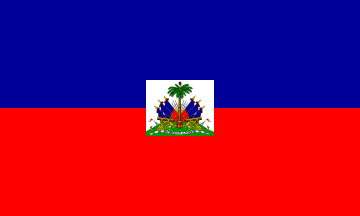Carnival
marks the beginning of one the holiest times of the year. It leads to a time
of repentance and abstinence. A time when millions of Christians all over the
world are engulfed in pray, reflection, forgiveness and rebirth. It commences
the celebration of the miracle of the life of Christ.
Since
it marks the beginning of the season for profound repentance and abstinence, it
inadvertently concludes the period of total indulgence and pleasure seeking, a
saturation of the senses that only the devilish side of a Christian can understand.
I suppose if one is to repent, one must have something to repent for.
Let's get down to it. This is about the biggest party ever; globally let's all
say: "C-A-R-N-I-V-A-L".
All
the angels on earth are singing and dancing to the overwhelming rhythms in blinding
lights and colors. It's time for Mardi-Gras! And you thought it was about Christmas!
Modern
carnival celebrations developed in Europe during the Middle Ages (5th century
to the 15th century) as a part of the Roman Catholic Church tradition named Lupercalia:
a fertility festival held each February in ancient Rome.
The word carnival derives from the Latin word Carnavale that means Meat Farewell.
The carnival period, which concluded on Mardi-Gras (Fat-Tuesday), pertains to
the custom of consuming all the fats in the home before the Easter season. It
is important to note that Wednesday following Mardi-Gras, known as Ash Wednesday,
marks the first day of the penitential season of lent in Christian churches. It
is customary for Roman Catholics to abstain from eating meat during the 40 days
of Lent leading to Good Friday, and Easter Sunday. Simply said, the season of
carnival leading to Mardi-Gras is the last opportunity for revelry and indulgence
in food, drink, music, and whatever before the temperance of Lent.
The Tuesday of Mardi -Gras varies from year to year. However, it always falls
between February 3rd and March 9th. The duration of the carnival period also varies
according to national and local traditions. For example, in Germany where this
celebration is called Fasching, it begins at the 11th hour of the 11th day of
the 11th month. In the carnival capital of the world, Rio de Janeiro, the actual
carnival parades begin five days before Fat Tuesday. In New Orleans they begin
twelve days before Mardi-Gras. In Haiti, it is the custom for radio stations to
begin broadcasting the carnival musical themes known as "Meringue Carnavalesque"
as soon as the New Year's festivities are over.
The carnival festival is marked by spectacular parades featuring floats, pageants/reines,
masked balls, elaborate costumes, seductive music, and dancing in the streets.
The pre-lenten carnival is celebrated predominantly in the Roman Catholic communities
in Europe and in the Americas. The more famous cities countries include France,
Germany, Rio de Janeiro, New Orleans, Trinidad, and Haiti. These festivities bring
a great deal of diversity to the culture of these countries, not to mention economic
growth. In New Orleans, for example, the carnival parades generate approximately
one billion dollars in revenue.
One of
the most important elements of carnival is music. Its purpose is to accentuate
the hopes and dreams of the people. For Haitians, there is a long history of romance
between the people and the inspired sounds of the sun. Our musicians make it their
duty to speak our sores, loves, spirit, and laughter.
During slavery, the slave masters "Les Colons" continued to celebrate
carnival according to their tradition in Haiti. The slaves could not celebrate
like Les Colons because they were not free. However, they used different strategies
to elude Les Colons later on. After the independence in 1804, the newly freed
individuals took advantage of their freedom to celebrate carnival for the first
time. They had all kings of Indian and Africans clothing, food, music, and cultural
shows during the celebration. They continued to celebrate the event until the
modern age of our society.
In the 1950's and 60's Haitians' carnival took a different turn, but kept all
of the flavors of the past. The Sundays preceding "Les trois jours Gras"
one meets all types of "Mardi Gras" from 9:00 AM to about midnight all
over the country. Poor, rich, middle class, educated or not wore carnival costumes
and visited one neighborhood to another. It was an all day event beginning Friday
to Fat Tuesday. On Friday, the Universities organized their own carnival known
as "Carnaval Des Etudiants." They traveled the streets of the capital
and the provinces, with their floats, their musical bands, and their pageants.
Saturday was reserved for all grammar and high school students. As observers,
the adults enjoyed themselves with the youth during these two days. The other
three days were the period during which people across the nation looked forward
to. The floats for the carnival was arranged as follows:
1)
Decorated bicycles
2) Decorated motorcycles
3) Guard-cote, special Mardi-Gras,
machan feuille/leaves merchants
4) Magicians, priests, lawyers, baron, funeral
march,�
5) Decorated mask, Indians, Zombies, and Africans
6) Chaloskas,
chouchoune, decorated animals such as horses, donkeys
7)"Band a pied"
such as; Ti Tato, Maison Ante, Zobolo, YoYo, Dragon, Diabolo, Lobodia, Derange,
Aroyo, Peuple S'amuse, Minuit-Minuit, Grande Puissance, Tolalito, and Autofonic.
No
one was allowed in the celebration without a uniform. Each band or band a pied
had a different color of uniform. The uniform determined which band the fans belonged
to. For the first time, in 1967, Webert Sicot participated with his band in the
carnival. One year later in 1968, he introduced Ti Simone, a pageant, to his float.
Also in 1969, Nemours participated for the first time in the carnival with his
band. Then in 1969 and thereafter, we found mini bands like Les Gypsies, Les Difficiles,
Suga Combo, Sheu-Shleu, Les Ambassadeurs, and later one found Bossa Combo, Scorpio
and DP Express.

No comments:
Post a Comment